The plaintiff’s allegation of negligence included the reasoning that the patient had chest pain, therefore a chest x-ray should have been obtained, which would have revealed a thoracic aortic aneurysm in enough time to intervene and save his life.
The foundation of this argument is that the patient had chest pain. Whether or not the patient truly had chest pain was not entirely clear from the documentation. In fact, there was conflicting evidence on this issue, which was particularly damning for the defense. While the nurse listed the chief complaint as chest pain, the nursing assessment later included the statement that the “patient denies chest pain”.
The physician did not mention chest pain at all in his HPI, but when he admitted the patient, the final diagnosis was listed as chest pain. He would later state that this was done to justify the decision to admit the patient on telemetry, not because the patient truly had chest pain.
Another pillar of the plaintiff’s argument was that the ED had a chest pain order set that included a chest x-ray. This order set was created so that nurses could initiate work-ups on patients while they were waiting for a doctor. The attorney was eager to point out that the physician documented a final diagnosis of chest pain, but he did not follow the ED’s own order set for chest pain workups.
This deposition shows the plaintiff’s attorney talking to the ED physician.
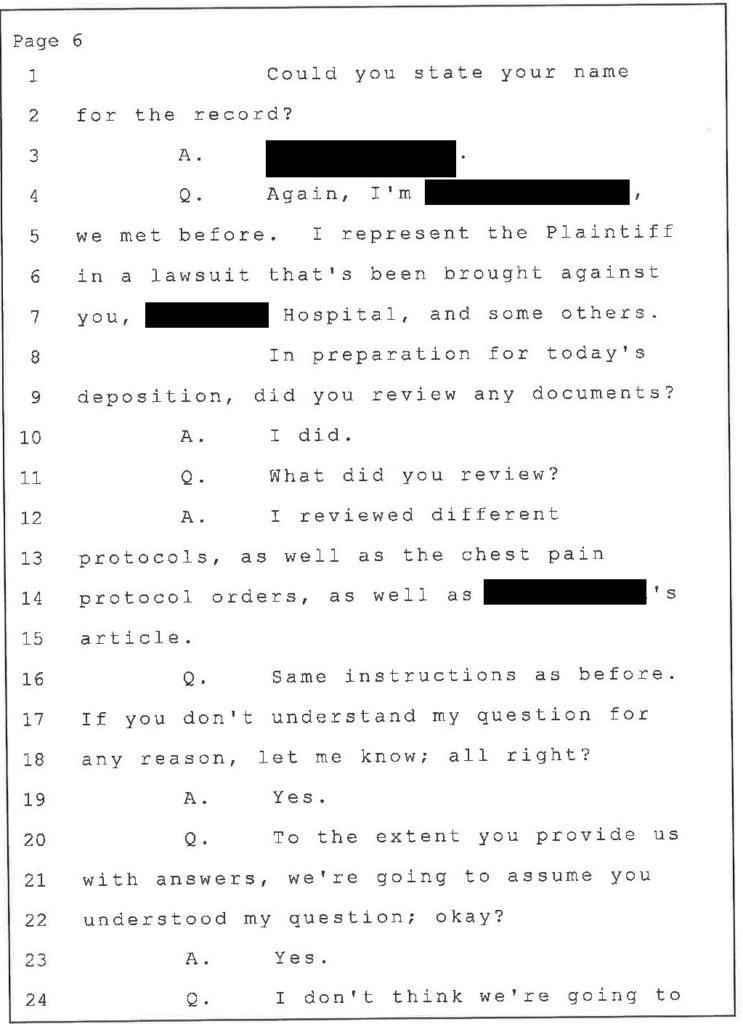
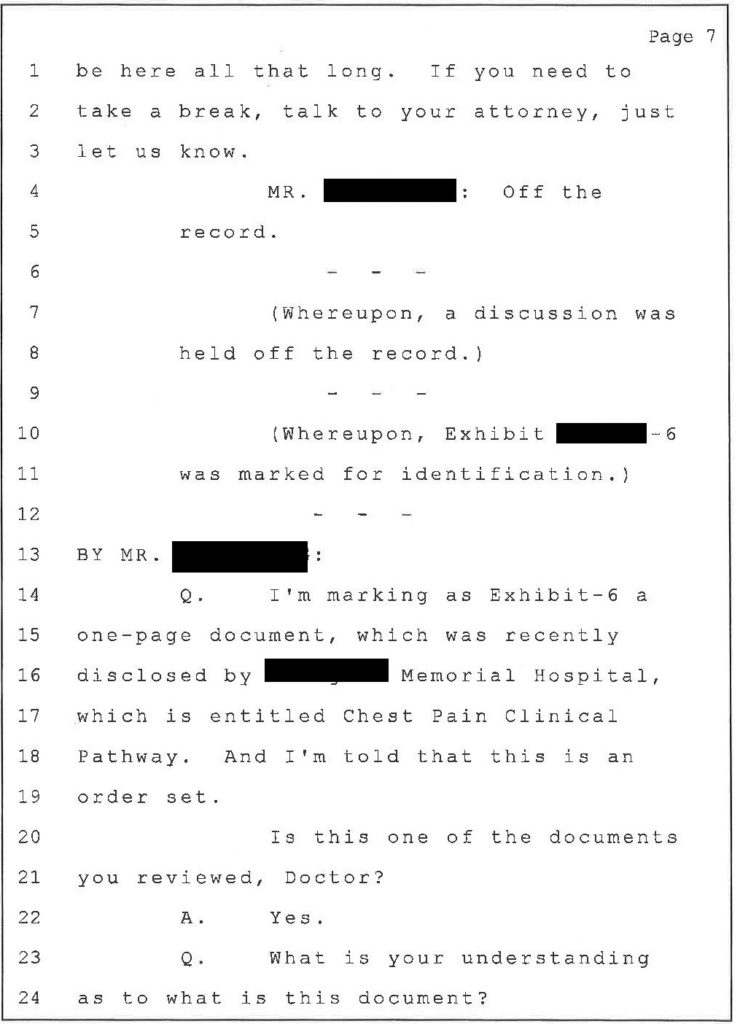
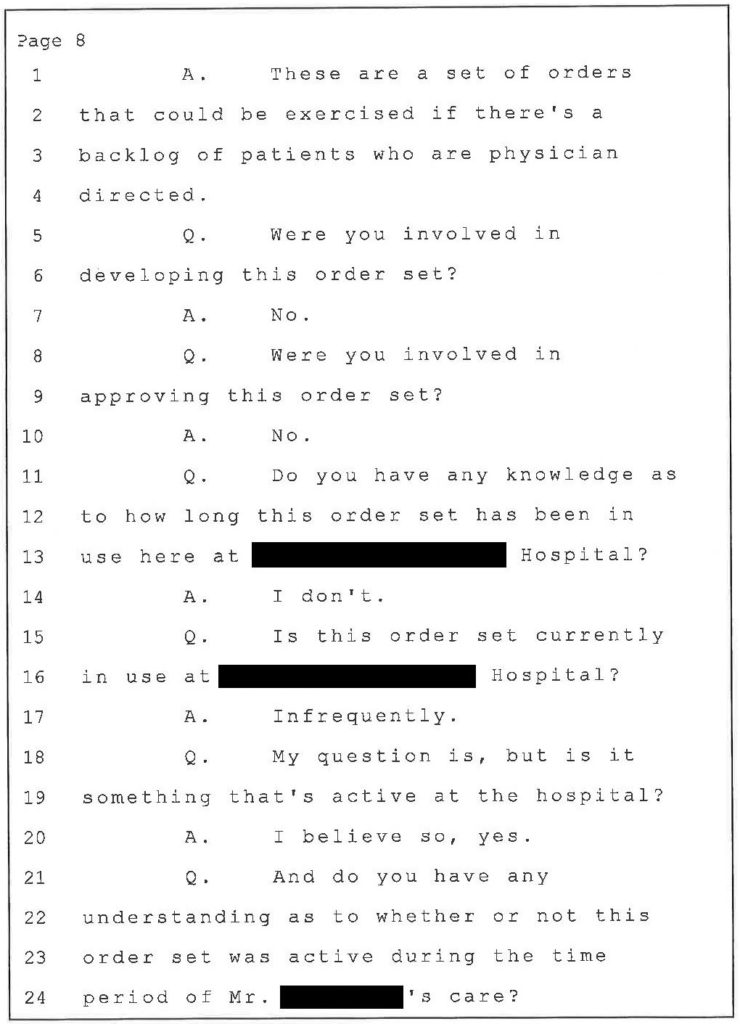
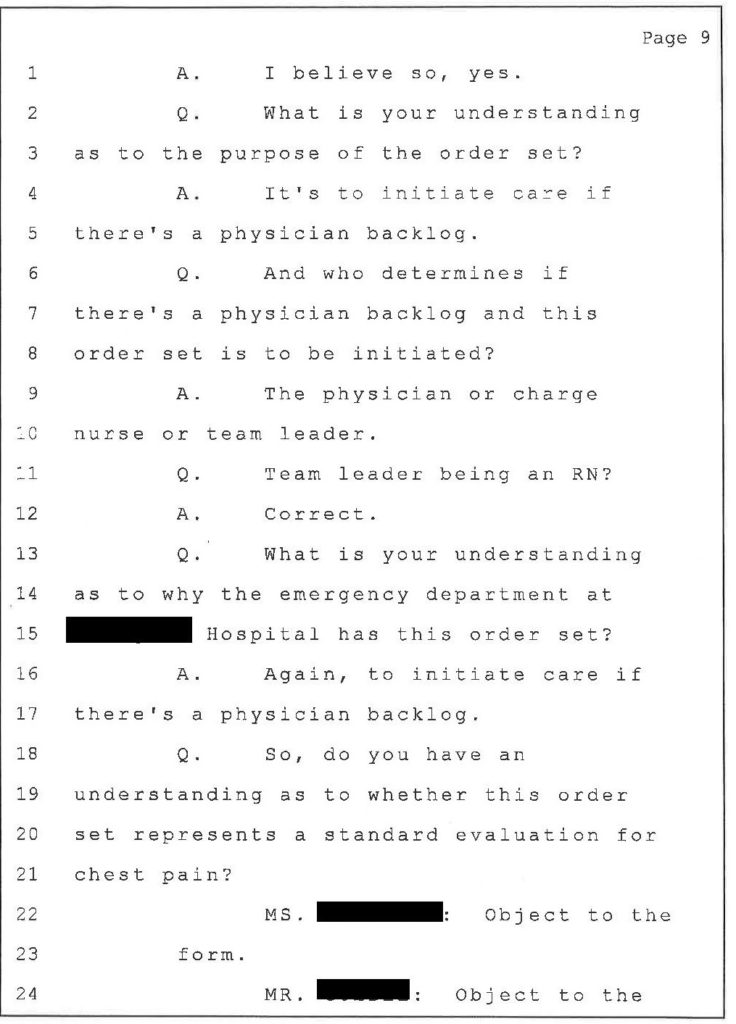
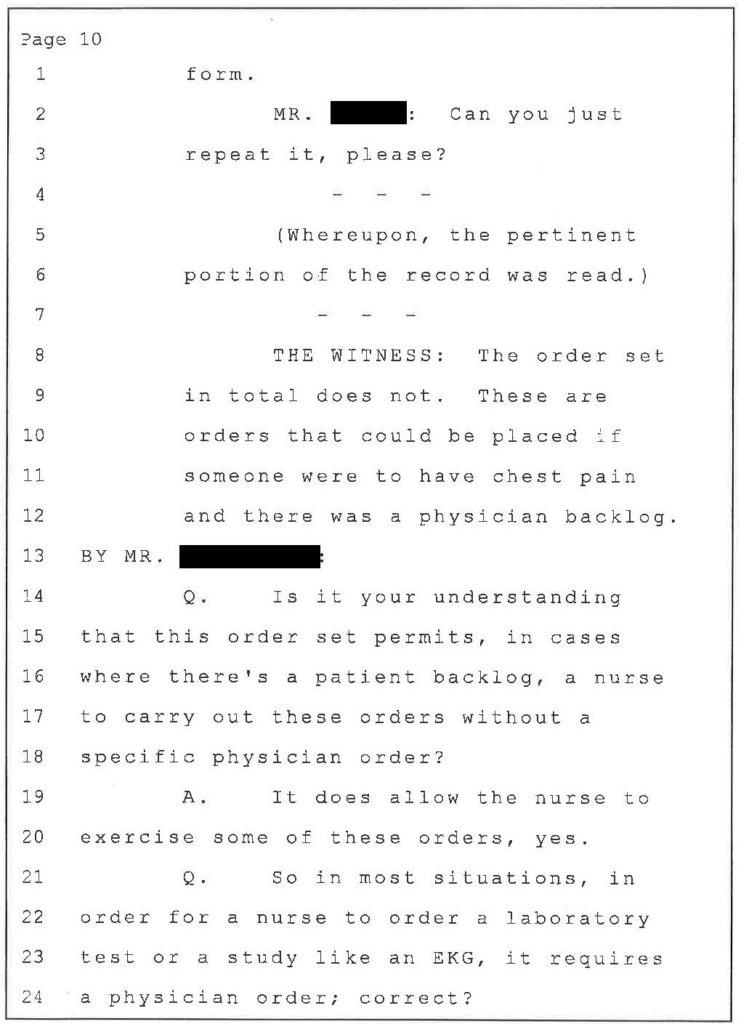
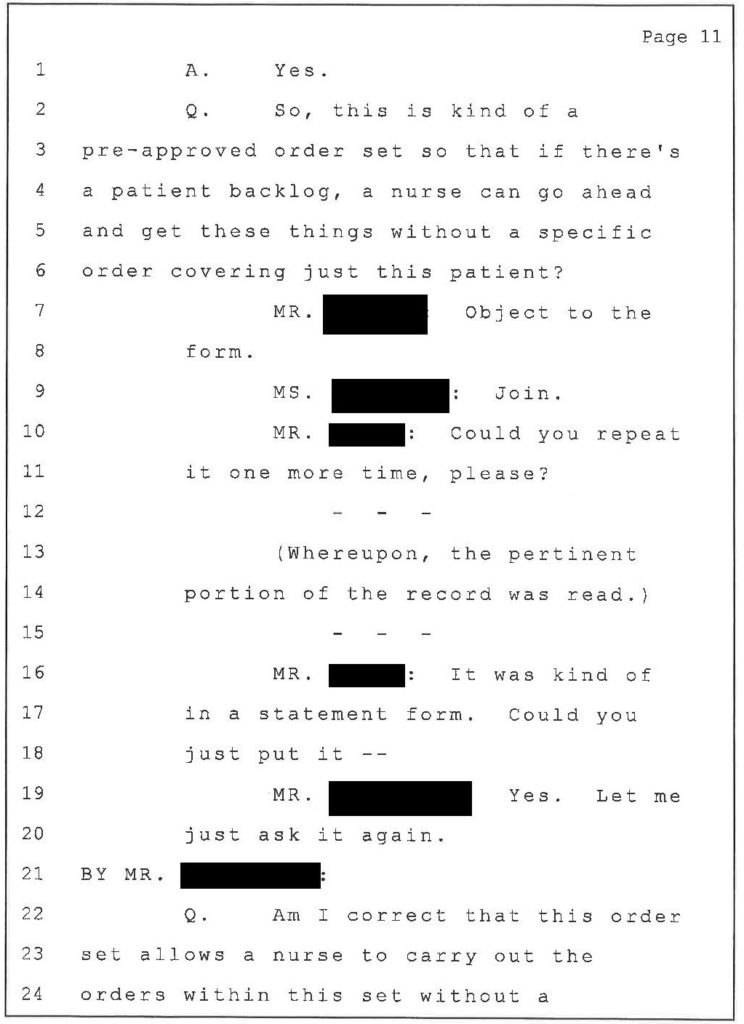
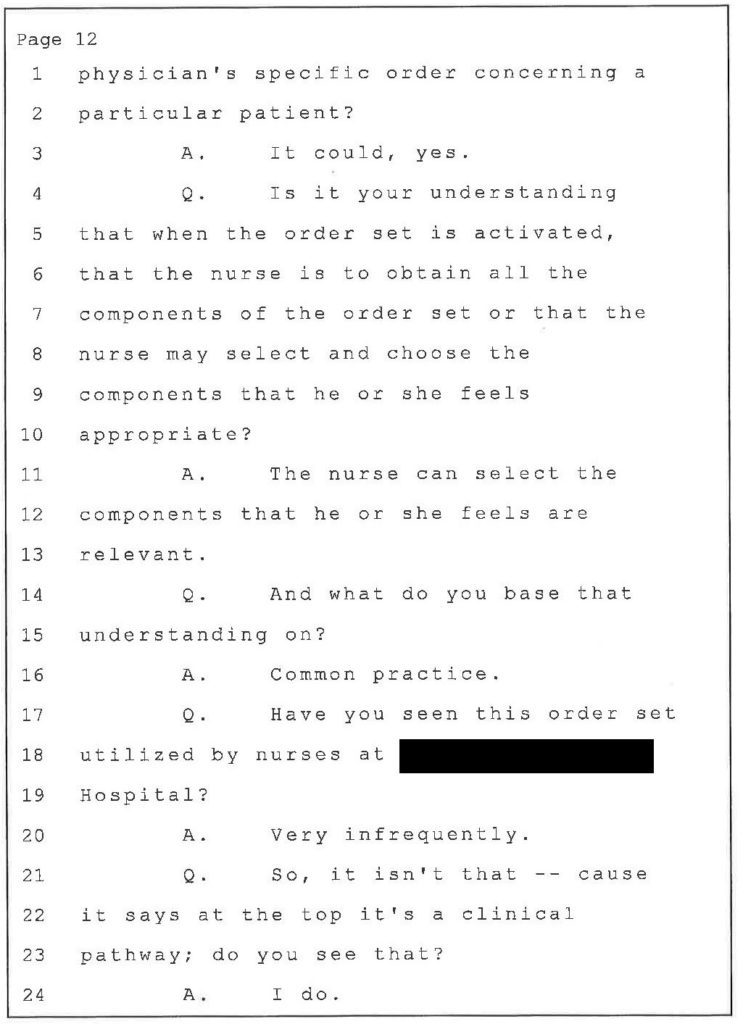
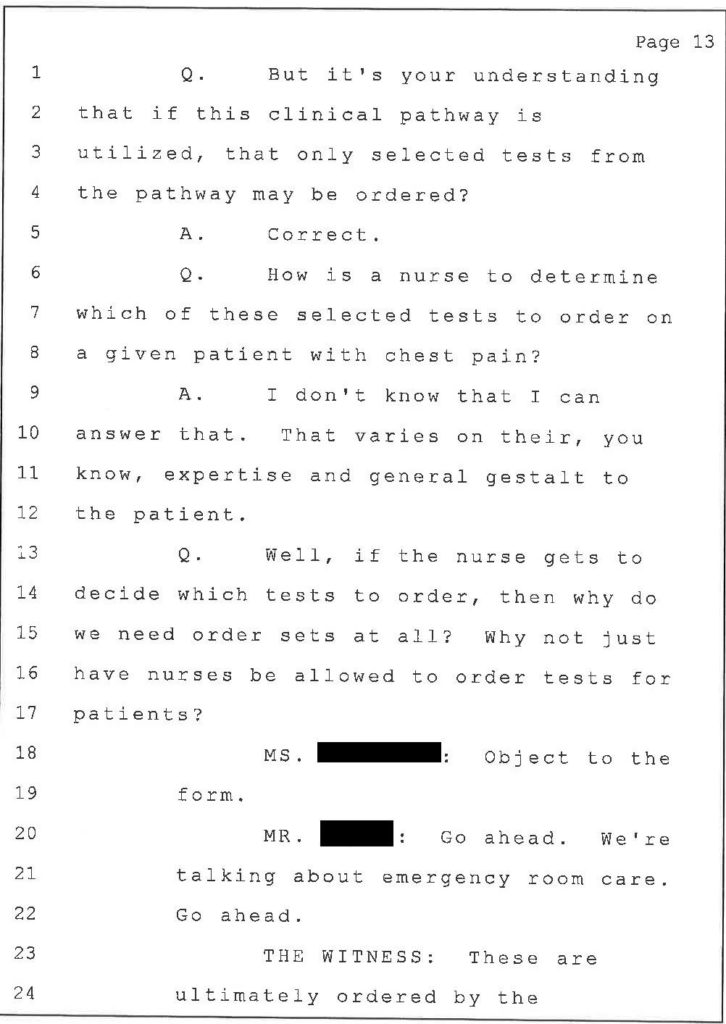
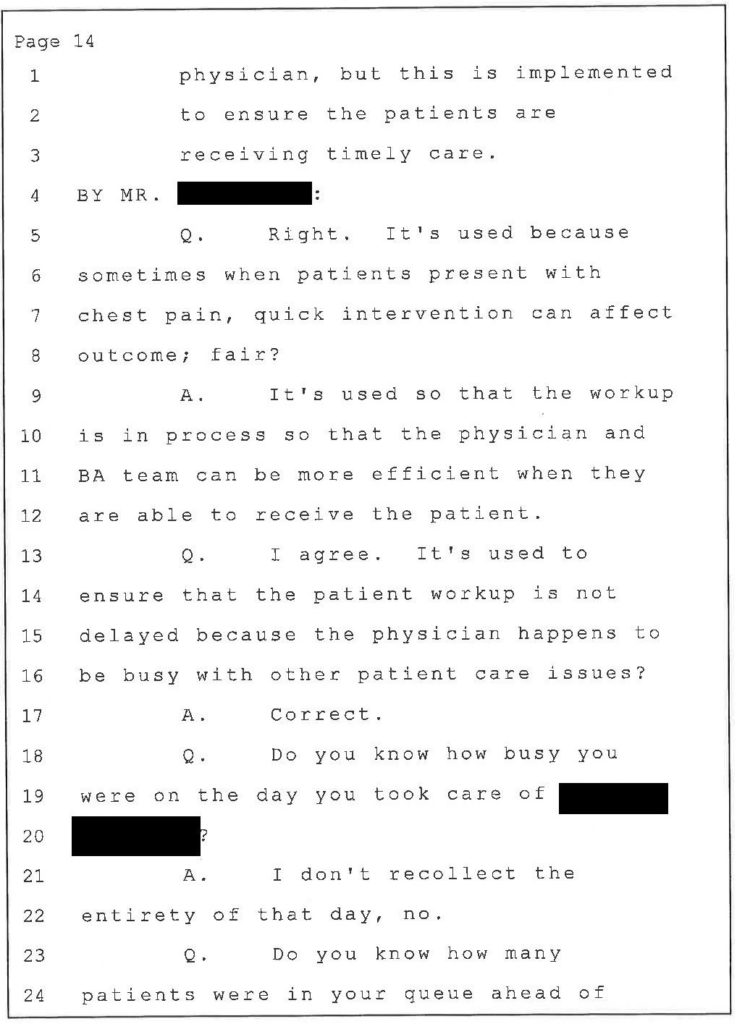
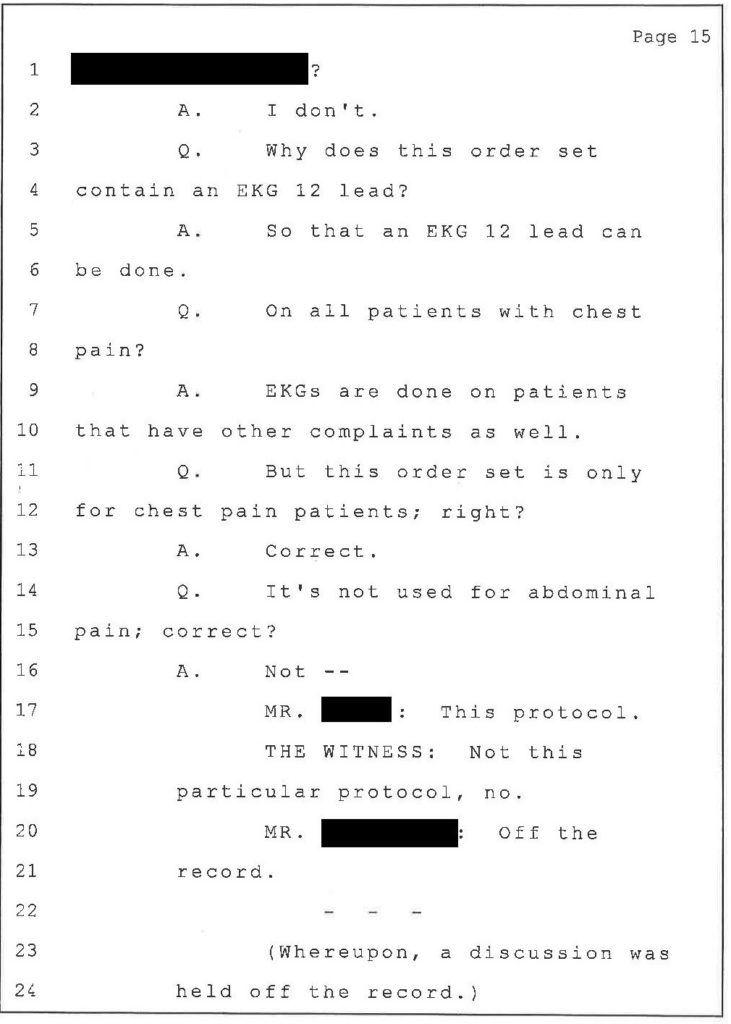
The EM doctor was deposed twice by the plaintiff’s attorney. In the next deposition, he is questioned about the presence or absence of chest pain, and the conversation again turns to the chest pain protocol.
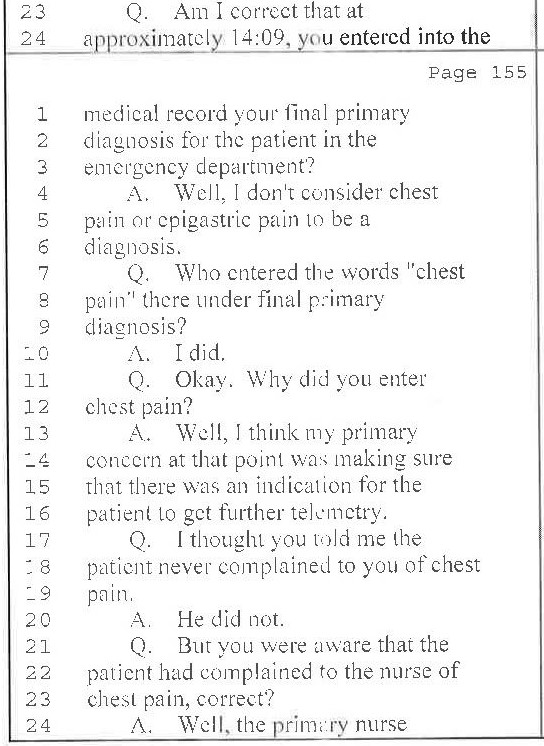
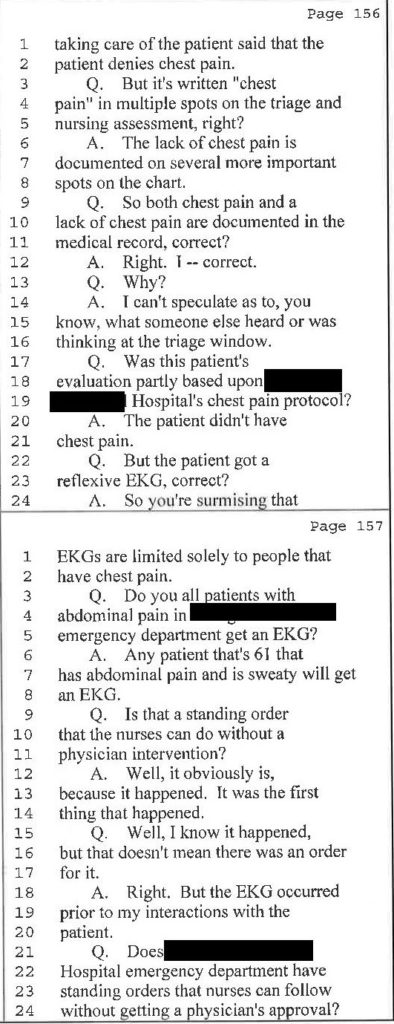
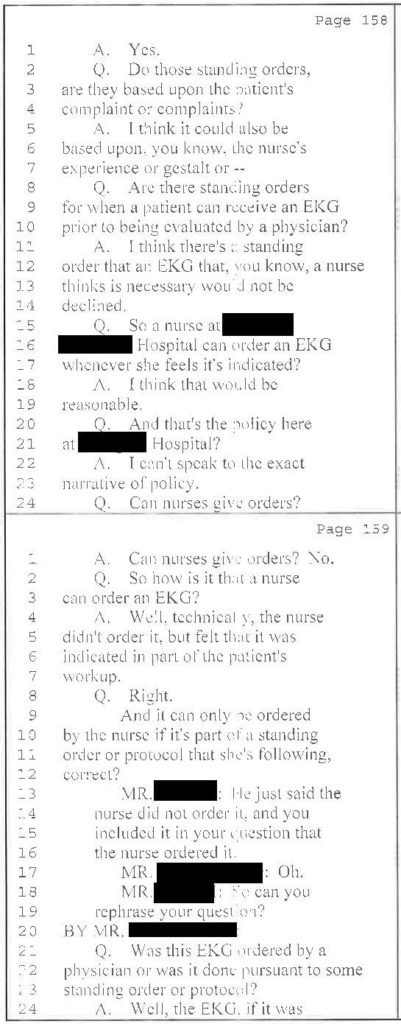
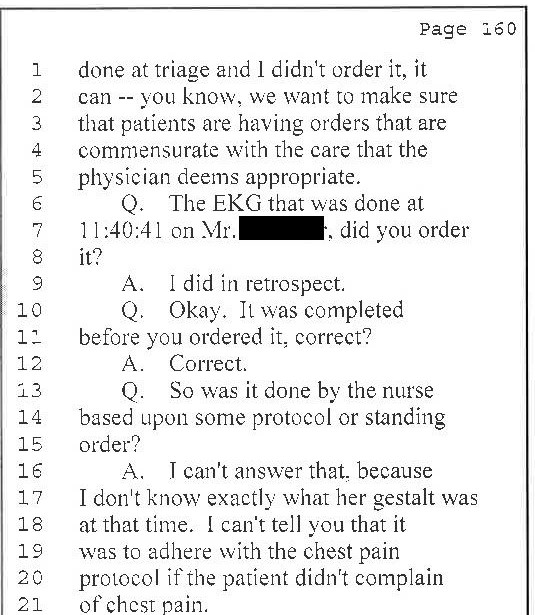
In the final part of the deposition, the physician explains that he documented chest pain as the final diagnosis, despite the patient never stating the he had chest pain.
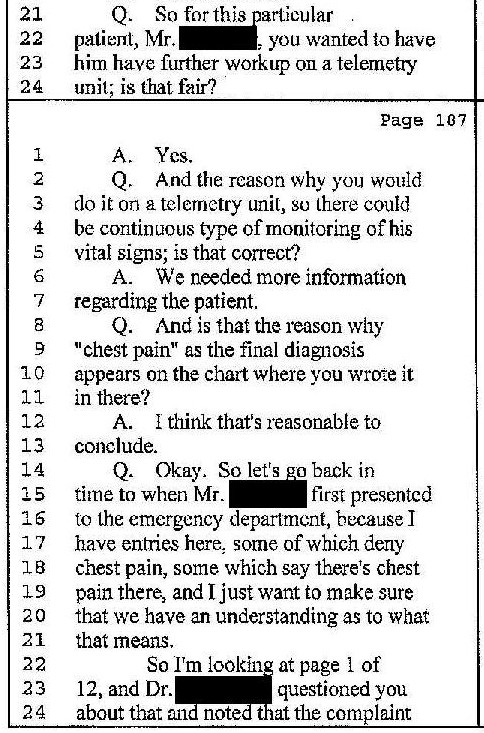
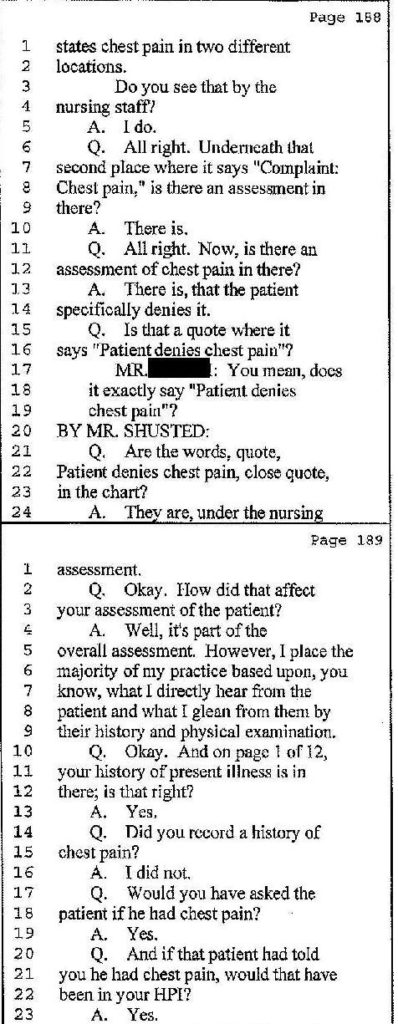
Reviewing these depositions is a good reminder of the importance of avoiding conflicting information in documentation. Any discrepancy will be scrutinized closely by the attorney in an attempt to make the physician appear negligent. Unfortunately, patients do not always present with simple and clear complaints, and discrepancies cannot always be avoided.
The next pages will cover the hospitalist’s deposition.